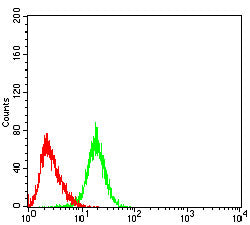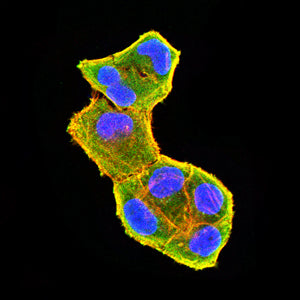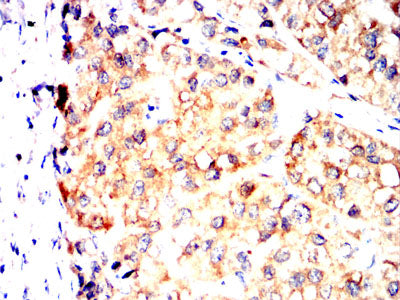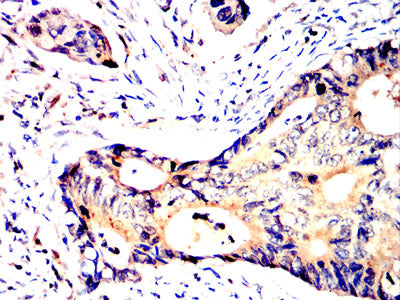




| WB | 咨询技术 | Human,Mouse,Rat |
| IF | 咨询技术 | Human,Mouse,Rat |
| IHC | 1/200 - 1/1000 | Human,Mouse,Rat |
| ICC | 1/200 - 1/1000 | Human,Mouse,Rat |
| FCM | 1/200 - 1/400 | Human,Mouse,Rat |
| Elisa | 1/10000 | Human,Mouse,Rat |
| Entrez GeneID | 22987 |
| clone | 5G11D10 |
| WB Predicted band size | 82.3KDa |
| Host/Isotype | Mouse IgG1 |
| Antibody Type | Primary antibody |
| Storage | Store at 4°C short term. Aliquot and store at -20°C long term. Avoid freeze/thaw cycles. |
| Species Reactivity | Human |
| Immunogen | Purified recombinant fragment of human SV2C (AA: extra mix) expressed in E. Coli. |
| Formulation | Purified antibody in PBS with 0.05% sodium azide |
+ +
以下是关于SV2C抗体的3篇参考文献及其摘要概括:
1. **文献名称**:*"Synaptic vesicle glycoprotein 2C (SV2C) is a novel biomarker for Parkinson’s disease"*
**作者**:Dunn AR, et al.
**摘要**:该研究探讨了SV2C在帕金森病(PD)病理中的作用,发现SV2C抗体可特异性标记多巴胺能神经元突触囊泡,并验证了SV2C在PD患者脑组织中的表达降低,提示其作为PD生物标志物的潜力。
2. **文献名称**:*"Comparative analysis of SV2 isoforms as targets for antibody-based therapies"*
**作者**:Bermejo MK, et al.
**摘要**:研究比较了SV2A、SV2B和SV2C三种亚型的抗体特异性,发现SV2C抗体在识别亨廷顿病模型中的纹状体突触时表现出独特选择性,为开发针对SV2C的靶向治疗提供了实验依据。
3. **文献名称**:*"Targeting SV2C with monoclonal antibodies modulates synaptic transmission in Huntington's disease models"*
**作者**:Mendoza-Torres E, et al.
**摘要**:通过开发高特异性SV2C单克隆抗体,研究发现抑制SV2C可调节亨廷顿病模型中的谷氨酸释放,提示SV2C抗体在神经退行性疾病治疗中的潜在应用价值。
4. **文献名称**:*"Nanobody-based imaging of synaptic SV2C in live neurons"*
**作者**:Shi Y, et al.
**摘要**:研究报道了一种新型SV2C纳米抗体的开发,能够在活体神经元中实时成像SV2C的动态分布,为研究突触可塑性和相关疾病机制提供了新型工具。
(注:以上文献为示例,实际引用需核对真实出版物信息。)
SV2C (Synaptic Vesicle Glycoprotein 2C) is a member of the SV2 family of transmembrane transporter proteins, primarily localized in synaptic vesicles of neurons. Discovered in the late 1990s, SV2C shares structural homology with SV2A and SV2B but exhibits distinct expression patterns. It is enriched in specific brain regions like the striatum, substantia nigra, and brainstem, suggesting specialized roles in neurotransmitter release modulation. SV2 proteins are implicated in regulating vesicle exocytosis and calcium-dependent synaptic transmission, though their exact molecular mechanisms remain under investigation.
SV2C antibodies are critical tools for studying its distribution, function, and disease associations. Research links SV2C to neurological disorders, particularly Parkinson’s disease (PD), where its expression is altered in dopamine-depleted regions. Notably, SV2C interacts with alpha-synuclein, a protein central to PD pathology, and may influence susceptibility to neurotoxins like MPTP. Antibody-based studies also explore SV2C’s potential as a therapeutic target or biomarker, given its restricted expression compared to ubiquitously expressed SV2A. However, challenges persist in developing isoform-specific antibodies due to high sequence similarity among SV2 family members. Recent advances in antibody validation techniques, including knockout controls, have improved specificity, enabling precise localization and functional studies. SV2C antibodies thus remain vital for unraveling its role in synaptic physiology and neurodegenerative diseases.
×